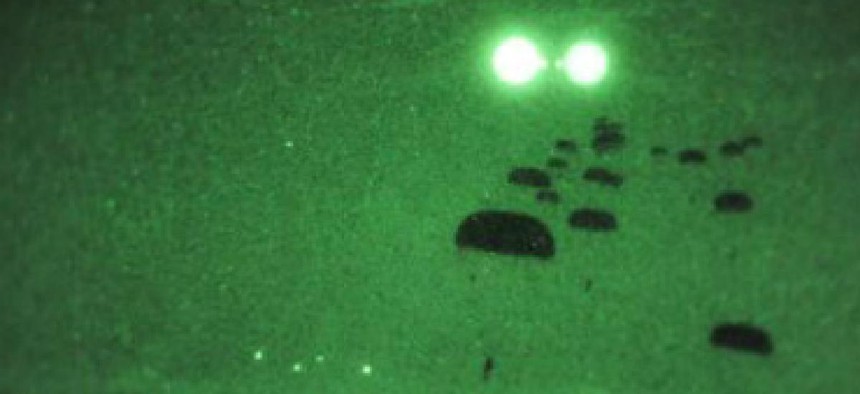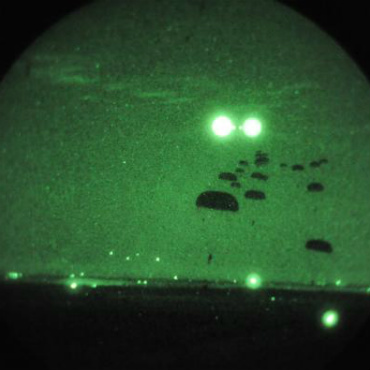Tech to help track parachute deployment

The Army wants an IT solution to track cargo and personnel parachute inventory.

A night drop by paratroopers from 2nd Brigade Combat Team, 82nd Airborne Division. (Photo Credit: Spc. Frank Smith, 982nd Combat Camera)
WHAT: A request for information from the Army for an IT solution to track cargo and personnel parachute inventory.
WHY: A lot of paperwork used to go into tracking parachutes to make sure they were not deployed beyond their useful life. Much of that effort is now automated by the use of radio frequency identification chips sewn into parachutes. The chips collect information on the number of jumps, user history, and when and by whom a parachute was last packed.
The Automated Movement and Identification Solutions section of the Army's Enterprise Information Systems runs a program that tracks T-11 parachutes using passive RFID detection. Now it appears the Army wants to upgrade and expand that functionality.
In the Sept. 9 RFI, the Automated Parachute Management System Working Group announced that it is seeking an enterprisewide system that supports 150 worldwide locations and as many as 750 active users and 100 to 200 other users who need to access system reports.
The system would track parachute inventory and collect data on workflows, such as parachute packing and inspection, chain of custody and maintenance. The system would also track personnel qualifications, training and jump status, which could refer to live deployment of parachutes in training and in combat.
The Army would like the system to receive real-time input from RFID-enabled parachutes and be interoperable with mobile computers and existing government systems. In some ways, the proposed functionality is similar to the inventory tracking used by large package delivery firms.
Vendors that can supply an off-the-shelf capability or a modified version of an existing commercial solution are invited to respond. The deadline is Sept. 21.
Click here to read the RFI.



